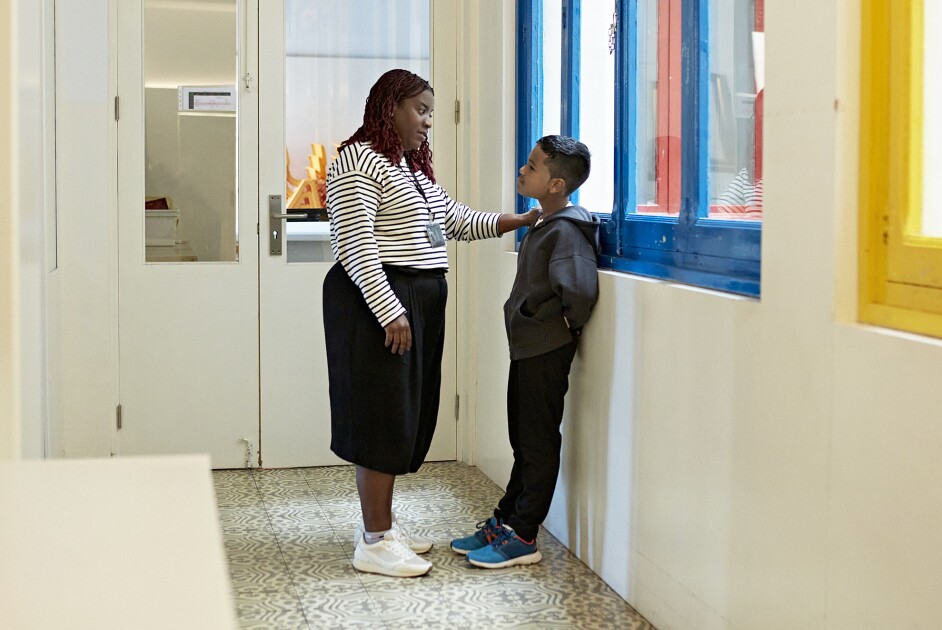
06 Mar One Group of Teachers Is Less Likely to Identify Black Students for Special Ed. Why That Matters
Teachers are often among the first to recognize that a student’s classroom struggles hint at an underlying disability. But racial and cultural differences may also lead teachers to interpret the same student as needing different kinds of help.
A new study published in the American Educational Research Journal finds Black teachers significantly less likely to identify students—and particularly low-income Black boys—for special education.
“I think the study could support calls for more recruitment of Black teachers,” said Cassandra Hart, a co-author of the study and an education professor at the University of California, Davis, noting that nationwide, only 7 percent of the teaching force yet 15 percent of students are Black. “But also … it gives support to the idea of providing more explicit training, making sure that teachers have clear guidance so that there’s less of an element of chance, based on who your teacher is in a given year, about whether you are screened for disability services.”
While special education identification can help students get needed supports, it can also exacerbate education opportunity gaps, and students of color and low-income students tend to be disproportionately identified for many kinds of disabilities. One 2019 study, for example, found that the greater the concentration of white students in a school, the more likely it was for students of color to be identified with disabilities like attention deficits, which are associated with more classroom exclusion and less access to grade-level material.
Hart and co-author Constance Lindsay, an assistant professor of educational leadership at the University of North Carolina, tracked data on teacher and student demographics as well as identification for gifted and special education services from more than 50,000 students who attended North Carolina public elementary schools from 2008 to 2013.
Nearly 1 in 4 of the students studied was identified as having a disability, nearly three-quarters of them by grade 2. But which teachers they had during those elementary years made a big difference in whether they ended up in special education.
In any given year, the researchers found that Black boys who had a teacher of the same race were 18 percent less likely to be identified for special education for the first time than their peers taught by a teacher of a different race. White students, and particularly boys, also were significantly less likely to be identified for disabilities if they had a Black teacher, though the effect was smaller than it was for Black boys. There was no significant difference in identification for girls or for academically gifted students, except that Black girls who had a Black teacher in 2nd grade—the year before gifted education identification—were about 2 percentage points more likely to be tapped for gifted programs.
Teacher-matching made the biggest difference when it came to certain categories for special education. For example, Black students were 25 percent less likely to be identified as having specific learning disabilities—a category including dyslexia and dyscalculia—and 10 percent less likely to be identified as having another health concern—a category including attention deficits—if they had a teacher of the same race than if their teacher was of a different race. By contrast, Black students taught by Black educators were slightly more likely to be identified as having intellectual disabilities, such as Down syndrome or fetal alcohol spectrum disorders.
“There’s very little subjectivity as to whether or not a child has a hearing disability or traumatic brain injury,” Hart said. “But if you think about things that might get students screened for attention deficit hyperactivity disorder, it’s sort of based on teachers looking at classroom behavior and determining whether [the students] seem to have difficulty paying attention in classroom settings. That’s a little bit more of a judgment call, whether a particular student is exhibiting a lack of attention in school or not.”
It’s not clear why Black teachers are identifying fewer students of any race for disabilities, though. “It’s possible that there’s something about the teacher’s personal philosophy toward when to screen for disabilities” that leads to lower identification rates, Hart said, “or it could be that there’s a better relationship with the teacher—and so the kid is actually coming and paying more attention at school, exhibiting less of the [behaviors] that might make you think to screen. We can’t disentangle that in these data.”
The results provide more evidence of benefits of diversifying the teacher workforce. In prior studies of teacher-student matching, Lindsay found low-income Black boys who had a Black teacher for at least one elementary school year were nearly 40 percent less likely to drop out of high school.


No Comments